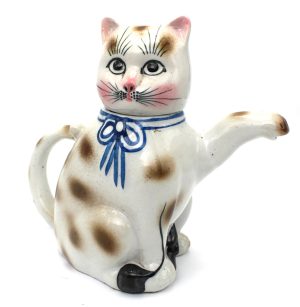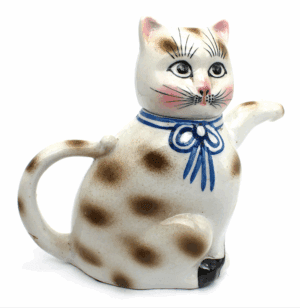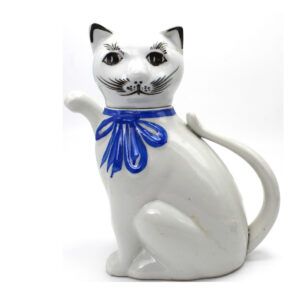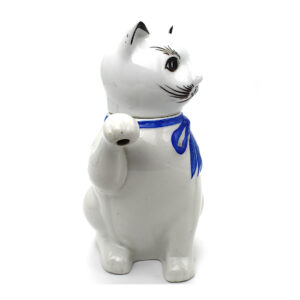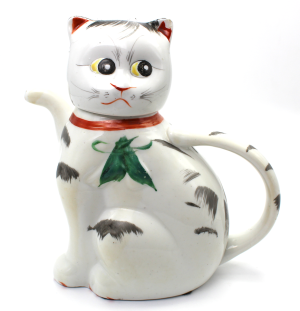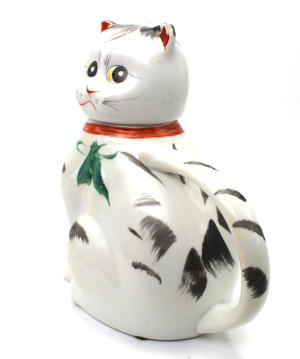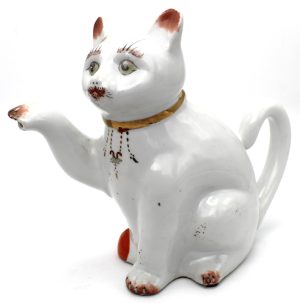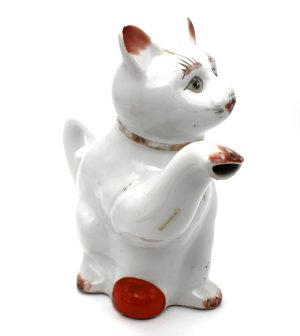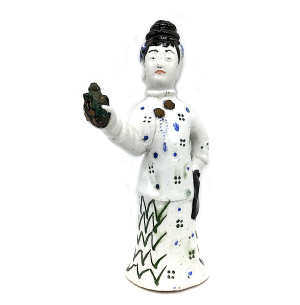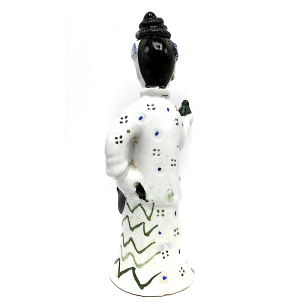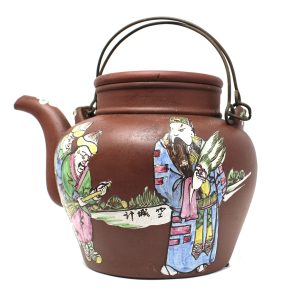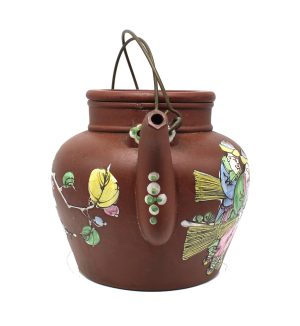Showing 13–18 of 18 results
-
Sale!


$145.00 Original price was: $145.00.$125.00Current price is: $125.00.
H: 7” W: 8” D: 3.625” | FREE SHIPPING WITHIN CONTINENTAL U.S.
Unique rotund teapot of cat protectively sitting on a mouse. Raised paw spout, removable head and sinuous tail handle. Blue collar ribbon with bow symbolize long life. Black, pink, brown accents on face, ears, head, paws and body.
-
Sale!


$130.00 Original price was: $130.00.$115.00Current price is: $115.00.
H: 8” W: 8” D: 3.75” | FREE SHIPPING WITHIN CONTINENTAL U.S.
This charming vintage porcelain cat teapot with raised paw for pouring tea, removable head and a sinuous tail handle is whimsical and colorful with a red ribbon collar, green bow and green, black and red accents defining the expressive face, ears, head and paws, all beautifully hand-painted. Manufactures seal on bottom.
-
Sale!


$145.00 Original price was: $145.00.$125.00Current price is: $125.00.
H: 8” W: 8” D: 3.75” | FREE SHIPPING WITHIN CONTINENTAL U.S.!
This charming vintage porcelain cat teapot with raised paw for pouring tea, removable head and a sinuous tail handle is whimsical and colorful with a red ribbon collar, green bow and green, black and red accents defining the expressive face, ears, head and paws, all beautifully hand-painted.
-
Sale!


$145.00 Original price was: $145.00.$125.00Current price is: $125.00.
Ht: 8” W: 8” D: 3.75” FREE SHIPPING WITHIN CONTINENTAL U.S.
Large, charming antique cat teapot with raised paw spout and spiral tail, gold decorative collar with dangles. Gesture of greeting and hospitality that welcome good luck and fortune.
-
Sale!


$265.00 Original price was: $265.00.$165.00Current price is: $165.00.
Ht: 8.5” W: 5” D: 3” | FREE SHIPPING WITHIN CONTINENTAL U.S.
This small charming Qing or early Chinese Republic teapot is an attendant, her right arm is the spout and the left is handle and her with flowers is a removable lid . She typical attendant clothing, a high mandarin collared jacket draped over a flaring skirt that is the piece’s base.
-
Sale!


$975.00 Original price was: $975.00.$695.00Current price is: $695.00.
H: 6” W: 8.5” D: 6.125” | FREE SHIPPING IN CONTINENTAL U.S.
Rare Yixing teapot with brown wash, bright painted enamel scene from Peking opera. Floral are wish for long and healthy life, perfect metaphor for sharing tea loved ones. Kiln seals in body, bottom, lid. For decoration only.
End of content
End of content

